- NEW DVD Series – Stone Setting with Bezels
- Tube Set Charm by Kim St. Jean
- Prong Basket Pendant by Kim St. Jean
- NEW DVD Series – Stone Setting with Cold Connections
- New DVD Series – Stone Setting with Wire
- NEW DVD Series: Introduction to Stone Setting by Kim St. Jean
- Featured Tool: Bracelet Bending Plier
- NEW Dvd by Eva Sherman
- Fun, Fast Fold Forming DVD Series
- Double Band Ear Cuff from Alex Simkin
Daily Wire Tip Oct. 25: Wrapping Cabochons
Daily Wire Jewelry Making Tip October 25, 2009
Question:
I have several questions: Where can I find inexpensive cabochons? Whats the smallest cabochon for a necklace in mm since they all seem to be measured that way on the internet? What is the ideal size for a wire wrapped cabochon necklace ?
Answer:
The range of cabochons available today is truly amazing! A cabochon is a stone that has been cut and polished with a dome shaped top and a flat, often unfinished backside. Traditionally cabochons were cut without facets but today’s lapidary’s are cutting cabs with faceted/designer tops too!
A cabochon can be cut from almost any rough rock material, be it transparent like a topaz, translucent like carnelian, or opaque like jasper. The shapes cut can be either ‘calibrated’, which means a stone has been cut exactly to a standard size, like a 13mm x 18mm oval or a 10mm square; or ‘freeform’, when the lapidary cuts a stone to any shape or size they desire.
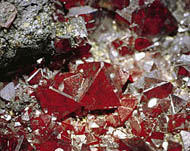
Lustrous red octahedral cuprite crystals from the Propretary Mine in Broken Hill. The largest is 2.5mm on edge.
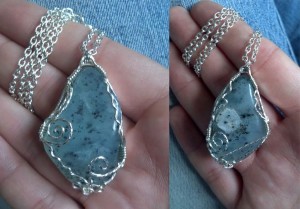
This stone might be a Andean Blue Opal from Peru, although it resembles dyed calcedony with inclusions. The stone is beautifully wire wrapped in a reversible pendant by D’Arcy Johnson.
The price of a cabochon is generally based on several facts regarding the material or mineral it is made of, such as the quality and/or rarity and popularity of the material, where it came from and size and/or weight, (measured in grams or carats). For example semi-precious stones such amazonite, onyx and aventurine are abundant and can be found and purchased in both freeform and calibrated sizes and shapes and are sold mainly by the piece. Rare jasper like Biggs Picture Jasper comes from a special location and the amount of work to find and cut a cabochon from a slab is time consuming, but it is a desirable material, popular, and is usually sold by the gram, (there are 28 grams in an ounce). Royal Lapis is another special material that can be sold by either the gram or by the carat, (there are 5 carats in a gram).
Then there are materials that are sold because of their acquired ‘name’. Using Lapis as an example, ‘denim’ lapis used to be considered a C grade material, (when I was a pebble pup, I was taught to ‘leave it right there’, as it wasn’t good enough to carry home). Someone coined the name ‘denim’, related the product to the fashion industry and voila! ‘Denim Lapis’ became desirable and an otherwise substandard material gained a market.
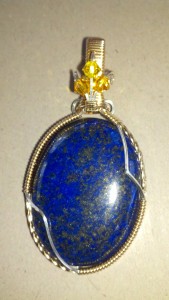
Lapis Lazuli pendant wrapped by Janet Crane in a mix of sterling silver and gold-filled wire, with Swarovski crystal beads.
Choice of cabochon size for use by the wire jewelry artist is totally the artist’s choice. Personally I find that 13 x 18mm oval and pear shaped cabs work up easily and sell well as pendants, but there are many other shapes and sizes that make beautiful pendants as well.
My last advice is to purchase your cabochons by their Size, not by their weight, as many materials are extremely heavy and you will be disappointed to find that the 8ct sapphire you ordered is about 1/3 of the size of an 8ct smoky quartz!

A nice example of a freeform amazonite cabochon, wrapped in 14kt gold filled wire by Wire-Sculpture Faculty member Jill Gentry.
Wire-Sculpture carries a large variety of calibrated cabochons and also has a great selection of ‘Designer’ cabs too! CLICK HERE to see them all!
Answer contributed by Dale “Cougar” Armstrong
Have a question? Submit your question here!





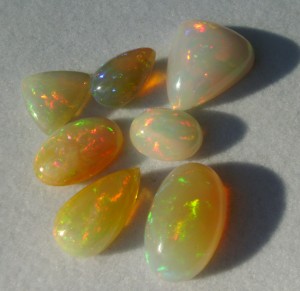
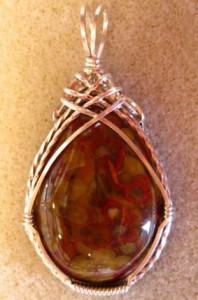


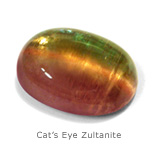


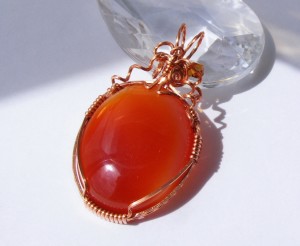
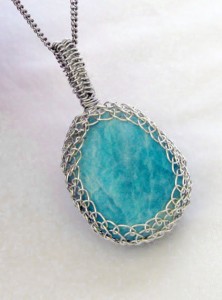
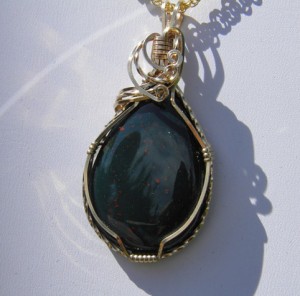
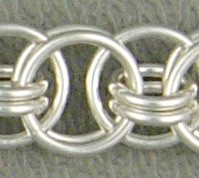
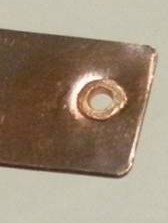
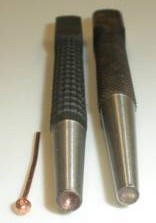















mike bethel
October 25, 2009 at 11:11 am
After reading this question I understand what a CAB is. Now for my question if I had an electric tile cutter could I cut my own cabochons? Thanks Mike Bethel
Linda Creager
July 19, 2014 at 7:33 pm
The answer to your question is no! ALL saws that are used to cut rock into slabs use either water or oil so that the blade & the rock do not become overheated. An overheated blade will warp & an overheated rock will break. To begin setting yourself up to do lapidary work, might I suggest that you first join a local lapidary club in your area or check to see what is offered by the Parks & Recreation. This is how I began & it is very helpful to learn from other cabbers.
Riki Metz
October 26, 2009 at 4:40 am
Dear Dale,
I really enjoy your answers to ‘tips of the day. Could you please tell me which tools you use to make the projects in your book and DVDs.
Thank you,
Riki
Dale/Cougar
November 4, 2009 at 10:56 pm
Well, you could probably do some pre-forming with a tile cutter, but you would need a cab machine to shape and polish them.
Dale/Cgr
Audra Stock
August 6, 2014 at 9:46 am
Hello,
What gage wire would I use to wrap a 25x 18 can?
Kind regards
Audra Stock
Kayjay
September 15, 2014 at 7:07 am
I have been having trouble finding cab wrapping pendant patterns that are not too ornate but rather focus on the bezel aspect of the wrap, like several of the ones featured here which are beautiful. Can you tell me where I would find a resource for these pendants, particularly the amazonite, jasper and bloodstone pendants if they are available. Thank-you.
Joan Himelblau
September 24, 2014 at 11:51 am
Just a reminder, there are hundreds of tutorials about this on YouTube, just search ‘lapidary tutorial’, ‘cutting cabochons’ or wire-wrapped cabochons’
Marlene Ilecki
June 2, 2015 at 11:01 am
I’ve been wire wrapping for about 4 1/2 years and I find that 22g. Half hard square sterling silver wire for the main wire and 20g. half hard half round for the wire wrapping works best.
Laverne Snow
June 6, 2015 at 8:47 am
I enjoyed this tip thank you for including photos!
Contrast Bardot Lace Trim Skater Dress UK
September 27, 2016 at 4:19 am
Very nice tips in your blog…i like it…
donna bushnell
October 11, 2016 at 5:19 am
Does anyone have any suggestions for how to wrap opals successfully?
Roselyn Archambault
January 3, 2017 at 10:55 am
What’s the average size of stone for making rings?
Caro
February 7, 2017 at 5:22 am
Great information and photo examples. Thank you